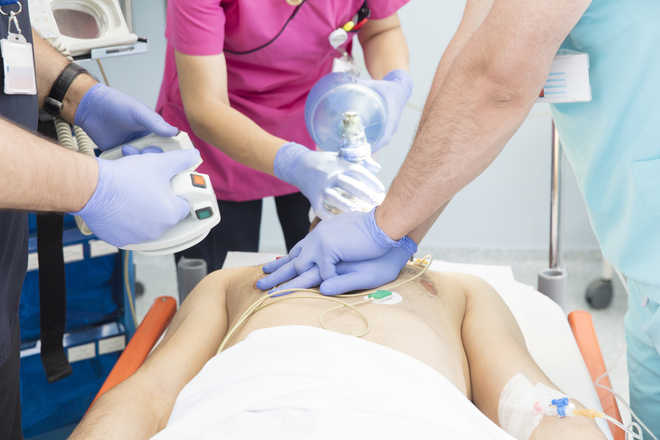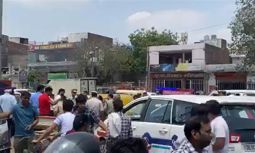
Photo for representational use only. iStock
Dr RK Jaswal
In our country, the coronary artery disease has increased to epidemic proportions. A major factor could be genetic predisposition of South East Asians (including Indians) to coronary heart diseases, as this disposition is two to three times higher in South Asians as compared to white races.
Several studies have shown that persons of Indian origin living in western countries for even more than two generations have two to three times higher incidence of coronary heart disease as compared to the native whites. This higher incidence is despite the fact that Indians have attained a similar local lifestyle as that of native residents.
Apart from genetic factors, unhealthy lifestyle contributes to very high incidence of heart disease among Indians. This includes unhealthy food habits, lack of physical activity, obesity and metabolic syndrome, tobacco consumption, and rising stress levels in day-to-day life. India has nearly 6 crore patients suffering from atherosclerotic cardiovascular disease. About 90 persons (1,500,000 in a year) die per hour due to cardiovascular disease.
In addition to a genetic predisposition and these unhealthy habits, coronary heart disease has started affecting even younger population in our country. Heart attacks occur at least 10 years earlier in our country as compared to western population.
Indians tend to have extensive diffuse coronary artery disease which, once starts, tends to progress fast. This makes heart attack among Indians not only much more frequent but also carries a higher mortality rate as compared to western population.
The survival and quality of life after heart attack depends upon the promptness with which the treatment is given to a person who has suffered a heart attack. Survival is significantly influenced by the quality of care provided by the treating hospital. The outcome can vary from hospital to hospital depending upon the expertise of the treating doctor, number of patients treated by the hospital and the level of experience of the entire team treating the heart attack patient.
Approximately 80 per cent of the heart muscle is damaged within first two hours (Golden Hour) after the onset of heart attack. Prompt action is required to quickly and effectively restore blood flow in the artery which is causing heart attack. Heart attack comes like a bolt from the blue. In majority of persons (86 per cent), there are no warning symptoms. The person, most of the time, is absolutely normal even two minutes prior to the onset of heart attack. Therefore, it is difficult for the victim to believe that he/she has suffered a heart attack which can lead to inordinate delay in reaching the hospital. That is why a large number of precious lives are lost even before reaching the hospital.
Clinical studies have shown that 70 per cent of the delay in treatment that may include opening the artery is due to inability of the person in recognising the heart attack and reaching hospital for prompt treatment.
A heart attack can be compared the heart on fire, therefore, majority of the muscle would be damaged by the time the affected person reaches hospital, especially if the delay is more than two hours. Therefore prompt action on a patient's part remains significant to control the damage. Every 30-minute delay increases the chances of death by 8 per cent.
A person suffering from heart attack has a better chance of survival if the hospital he/she is rushed to is equipped to handle such cardiac emergencies. However, if this is not possible then after the immediate nearest medical intervention, the patient should be examined at a well-equipped hospital.
Remember, if only medicines are given to the patient of heart attack, 50 to 79 per cent of the victims will die. In sharp contrast if an effective treatment is given quickly and efficiently, up to 97 per cent of the patients survive and can lead a high quality life. General awareness on part of the public and good-quality prompt treatment can save most of the lives lost to the heart attack.
— The writer is director, cardiology, Fortis Hospital, Mohali.
------------------------------------------------
Symptoms
A heart attack normally presents itself as a pain or feeling of pressure or discomfort or a feeling of tightness in the middle of the chest, spreading to both sides of the chest (left >right).
Many times it presents as indigestion or shortness of breath or sweating or nervousness.
In elderly and/or diabetics, there can be silent heart attack also. The moment a person has any of the above mentioned symptoms even in milder forms, the doctor should be consulted immediately and an ECG should be performed without delay.



























